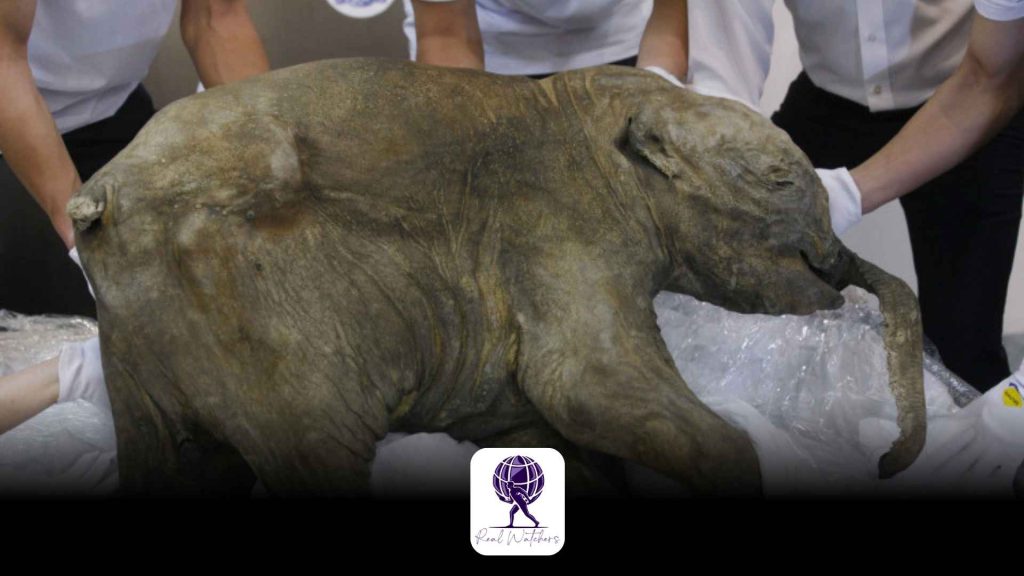In a remarkable discovery, Russian scientists have presented the remains of a baby mammoth estimated to be 50,000 years old. The ancient specimen was uncovered in thawing permafrost in the isolated Yakutia region of Siberia during the summer months.
Experts assert that “Yana,” named after the river basin of her discovery, holds the title of the world’s best-preserved mammoth carcass.
At over 100kg (15st 10lb) and measuring 120cm (4ft) in height and 200cm in length, Yana is believed to have been approximately one year old at the time of her death.
Before this finding, there had been just six comparable discoveries globally, with five located in Russia and one in Canada.
Residents near the Batagaika crater, recognized as the largest permafrost crater globally, discovered Yana within its depths.
The head of the Lazarev Mammoth Museum Laboratory stated that the residents “were in the right place at the right time.”
“Upon observing that the mammoth had nearly fully thawed, they resolved to construct a makeshift stretcher to elevate the mammoth to the surface,” stated Maxim Cherpasov.
“Typically, the first area to thaw, particularly the trunk, is frequently consumed by contemporary predators or birds,” he told the Reuters news agency.
However, he noted, “even though the forelimbs have already been eaten, the head is remarkably well preserved.”
Gavril Novgorodov, a researcher at the museum, informed Reuters that the mammoth “probably got trapped” in a swamp, leading to its preservation for “several tens of thousands of years.”
Yana is currently under examination at the North-Eastern Federal University, located in the region’s capital, Yakutsk.
Researchers are currently performing examinations to determine the time of death.
Russia’s expansive permafrost has yielded several significant pre-historic discoveries in recent years. This trend has emerged as the long-frozen ground begins to thaw due to climate change.
Last month, researchers in the area unveiled the remains of a partially mummified saber-tooth cat, estimated to be nearly 32,000 years old.
Earlier this year, researchers uncovered the remains of a wolf that dates back 44,000 years.








